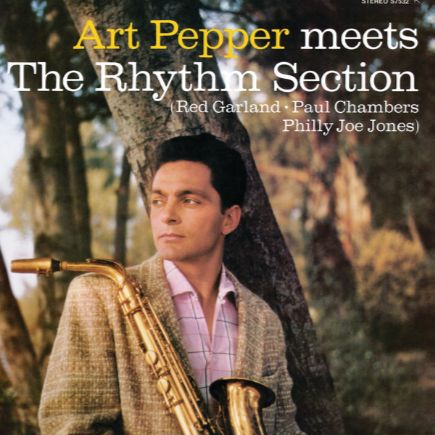You’d Be So Nice to Come Home To: entre mélancolie intime et résonance collective
Écrite en 1942 par Cole Porter pour le film Something to Shout About (1943), You’d Be So Nice to Come Home To fut immédiatement saluée, recevant une nomination à l’Oscar de la meilleure chanson originale. Pourtant, il faudra près d’une décennie pour qu’elle s’impose comme un véritable standard du jazz.
Porter y déploie l’élégance harmonique et la sophistication mélodique qui caractérisent son écriture. Le morceau se distingue par une ligne mélodique simple en apparence, mais riche en nuances et en inflexions expressives. Cette couleur légèrement mélancolique entre en tension productive avec le texte: une déclaration d’amour empreinte d’espoir, de désir et de promesse, qui trouve un écho profond dans le contexte de la Seconde Guerre mondiale.
En effet, You’d Be So Nice to Come Home To résonnait tout particulièrement auprès des soldats éloignés du front et de leurs proches restés à l’arrière. Les paroles, à la fois tendres et pleines d’attente, cristallisent le rêve universel du retour, du lien retrouvé, de la chaleur humaine face aux incertitudes du temps présent.
Art Pepper et l’art de la conversation musicale
Enregistrée à Los Angeles le 19 janvier 1957 pour l’album Art Pepper Meets The Rhythm Section, la version de You’d Be So Nice to Come Home To incarne l’équilibre parfait entre virtuosité, lyrisme et spontanéité. Cette session mythique, réunissant Art Pepper au saxophone alto avec Red Garland au piano, Paul Chambers à la contrebasse et Philly Joe Jones à la batterie, demeure un sommet de la rencontre entre la fluidité du West Coast jazz et la puissance nerveuse du hard bop new-yorkais.
Dès l’introduction, l’énergie du quartet s’impose: le tempo vif, la pulsation élastique et la précision rythmique de la section d’accompagnement installent un climat de tension maîtrisée. Art Pepper entre dans le thème avec une assurance tranquille, déployant un phrasé souple et lumineux.
Paul Chambers, d’un swing profond et chantant, tisse un lien organique entre les solistes, tandis que Philly Joe Jones impulse un flux rythmique d’une souplesse exemplaire, ponctué de contretemps vifs et de cymbales scintillantes.
You’d Be So Nice to Come Home To: entre melancolía íntima y resonancia colectiva
Escrita en 1942 por Cole Porter para la película Something to Shout About (1943), You’d Be So Nice to Come Home To fue aclamada de inmediato y recibió una nominación al Óscar a la mejor canción original. Sin embargo, pasarían casi diez años antes de que se consolidara como un verdadero estándar del jazz.
Porter despliega en ella la elegancia armónica y la sofisticación melódica que caracterizan su escritura. La pieza destaca por una línea melódica en apariencia sencilla, pero rica en matices e inflexiones expresivas. Esta coloración ligeramente melancólica entra en tensión fecunda con el texto: una declaración de amor cargada de esperanza, deseo y promesa, que halló un eco profundo en el contexto de la Segunda Guerra Mundial.
En efecto, You’d Be So Nice to Come Home To resonaba especialmente entre los soldados lejos del frente y sus seres queridos que esperaban en casa. La letra, tierna y llena de anhelo, cristaliza el sueño universal del regreso, del reencuentro, del calor humano frente a las incertidumbres del presente.
Art Pepper y el arte de la conversación musical
Grabada en Los Ángeles el 19 de enero de 1957 para el álbum Art Pepper Meets The Rhythm Section, la versión de You’d Be So Nice to Come Home To encarna el equilibrio perfecto entre virtuosismo, lirismo y espontaneidad. Esta sesión mítica, que reúne a Art Pepper al saxofón alto con Red Garland al piano, Paul Chambers al contrabajo y Philly Joe Jones a la batería, sigue siendo una cumbre del encuentro entre la fluidez del jazz de la Costa Oeste y la energía nerviosa del hard bop neoyorquino.
Desde la introducción, la energía del cuarteto se impone: el tempo vivo, la pulsación elástica y la precisión rítmica de la sección de acompañamiento crean un clima de tensión controlada. Art Pepper entra en el tema con una seguridad serena, desplegando un fraseo flexible y luminoso.
Paul Chambers, con un swing profundo y melódico, teje un vínculo orgánico entre los solistas, mientras Philly Joe Jones impulsa un flujo rítmico de flexibilidad ejemplar, salpicado de contratiempos vivos y platillos centelleantes.
You’d Be So Nice to Come Home To: tra malinconia intima e risonanza collettiva
Scritta nel 1942 da Cole Porter per il film Something to Shout About (1943), You’d Be So Nice to Come Home To fu subito accolta con favore e ricevette una nomination all’Oscar per la miglior canzone originale. Tuttavia, ci vorrà quasi un decennio prima che venga riconosciuta come un vero standard del jazz.
Porter vi dispiega tutta l’eleganza armonica e la raffinatezza melodica che contraddistinguono la sua scrittura. Il brano si distingue per una linea melodica apparentemente semplice, ma ricca di sfumature e inflessioni espressive. Questo colore lievemente malinconico entra in tensione fertile con il testo: una dichiarazione d’amore intrisa di speranza, desiderio e promessa, che trova un’eco profonda nel contesto della Seconda guerra mondiale.
You’d Be So Nice to Come Home To risuonava infatti in modo particolare tra i soldati lontani dal fronte e i loro cari rimasti a casa. Il testo, tenero e colmo d’attesa, cristallizza il sogno universale del ritorno, del ricongiungimento, del calore umano di fronte alle incertezze del tempo presente.
Art Pepper e l’arte della conversazione musicale
Registrata a Los Angeles il 19 gennaio 1957 per l’album Art Pepper Meets The Rhythm Section, la versione di You’d Be So Nice to Come Home To incarna il perfetto equilibrio tra virtuosismo, lirismo e spontaneità. Questa sessione leggendaria, che riunisce Art Pepper al sax alto con Red Garland al pianoforte, Paul Chambers al contrabbasso e Philly Joe Jones alla batteria, rimane un vertice dell’incontro tra la fluidità del jazz della West Coast e la forza nervosa dell’hard bop newyorkese.
Fin dall’introduzione, l’energia del quartetto si impone: il tempo brillante, la pulsazione elastica e la precisione ritmica della sezione d’accompagnamento creano un clima di tensione controllata. Art Pepper entra nel tema con una sicurezza pacata, sviluppando un fraseggio flessibile e luminoso.
Paul Chambers, con uno swing profondo e cantabile, tesse un legame organico tra i solisti, mentre Philly Joe Jones imprime un flusso ritmico di straordinaria elasticità, punteggiato da controtempi vivaci e piatti scintillanti.
You’d Be So Nice to Come Home To: between intimate melancholy and collective resonance
Written in 1942 by Cole Porter for the film Something to Shout About (1943), You’d Be So Nice to Come Home To was immediately acclaimed, earning an Academy Award nomination for Best Original Song. Yet it would take nearly a decade for it to establish itself as a true jazz standard.
Porter displays here the harmonic elegance and melodic sophistication that define his writing. The piece is marked by a seemingly simple melodic line, rich in nuance and expressive inflection. Its slightly melancholic tone creates a productive tension with the lyrics—a declaration of love filled with hope, longing, and promise—which resonated deeply during the Second World War.
Indeed, You’d Be So Nice to Come Home To struck a particular chord with soldiers far from home and the loved ones waiting for their return. The lyrics, both tender and full of yearning, crystallize a universal dream: the hope of return, of reunion, of human warmth in uncertain times.
Art Pepper and the art of musical conversation
Recorded in Los Angeles on January 19, 1957, for the album Art Pepper Meets The Rhythm Section, the version of You’d Be So Nice to Come Home To embodies the perfect balance between virtuosity, lyricism, and spontaneity. This legendary session, bringing together Art Pepper on alto saxophone with Red Garland on piano, Paul Chambers on bass, and Philly Joe Jones on drums, stands as a pinnacle of the meeting between the fluidity of West Coast jazz and the nervous drive of New York hard bop.
From the introduction, the quartet’s energy is immediately evident: the brisk tempo, elastic pulse, and rhythmic precision of the rhythm section establish a climate of controlled tension. Art Pepper enters the theme with quiet confidence, unfolding a supple and luminous phrasing.
Paul Chambers, with deep, singing swing, weaves an organic link between the soloists, while Philly Joe Jones propels a rhythmic flow of exemplary flexibility, punctuated by lively syncopations and shimmering cymbals.


